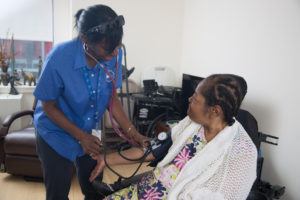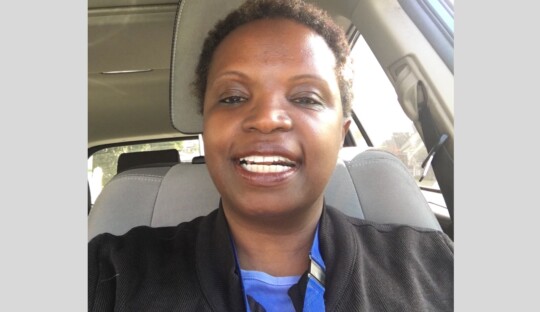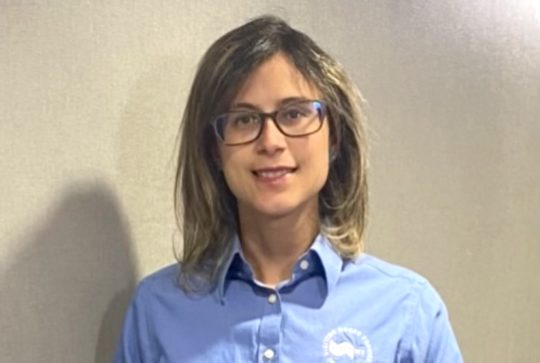New VNSNY Research Center Study in the American Journal of Hypertension Finds Home Care Significantly Lowers Blood Pressure in Black and Hispanic Stroke Patients
 A new study by VNSNY’s Center for Home Care Policy & Research found that standard home health care reduced systolic blood pressure by about 10 points in black and Hispanic patients who had recently suffered a stroke. The study, published in the American Journal of Hypertension, found the improvements appeared within the first 3 months after hospital discharge, and that they persisted and actually increased slightly after 12 months.
A new study by VNSNY’s Center for Home Care Policy & Research found that standard home health care reduced systolic blood pressure by about 10 points in black and Hispanic patients who had recently suffered a stroke. The study, published in the American Journal of Hypertension, found the improvements appeared within the first 3 months after hospital discharge, and that they persisted and actually increased slightly after 12 months.
“This is an important finding for several reasons,” says Margaret McDonald, the Research Center’s Associate Director, who co-authored the study with Penny Feldman, Senior Scientist and Director Emerita of the Center. “First, high blood pressure tends to be less controlled among black and Hispanic populations, so identifying an effective way of treating hypertension in these individuals is a big step. Second, a 10-point drop in systolic blood pressure is a major improvement, which significantly reduces people’s risk of having another stroke. And finally, our study showed that standard, cost-effective home care was the key to these patients’ improvement, and that additional interventions beyond that standard care did not result in further improvement.”
 In the study, 495 recently discharged stroke patients were divided into three groups: One group received “usual home care,” defined as a standard number of home visits by a nurse and/or rehabilitation therapist plus home health aide and social work services as appropriate. This care included regular blood pressure monitoring, a review of the patient’s medications, and education around the importance of healthy diet and moderate exercise, supplemented by contacts between the visiting clinician and the patient’s physician. The second group received this same home care plus several visits and telephonic check-ins from a nurse practitioner (NP). The third group received home care, NP support and an additional 60 days of support from a home health aide trained to serve as a health coach.
In the study, 495 recently discharged stroke patients were divided into three groups: One group received “usual home care,” defined as a standard number of home visits by a nurse and/or rehabilitation therapist plus home health aide and social work services as appropriate. This care included regular blood pressure monitoring, a review of the patient’s medications, and education around the importance of healthy diet and moderate exercise, supplemented by contacts between the visiting clinician and the patient’s physician. The second group received this same home care plus several visits and telephonic check-ins from a nurse practitioner (NP). The third group received home care, NP support and an additional 60 days of support from a home health aide trained to serve as a health coach.
“All three groups improved their average systolic blood pressure by about 10 points,” says Margaret. “But the interesting finding was that neither the home care-plus-NP group or the home care-NP-health coach group did better than the group received just the usual home care services.” In fact, the “just home care” group did slightly better than the others, showing an average 10.33-point drop in blood pressure, compared to improvements of just under 10 points for the other two groups, although there was still room for more improvement in all groups.
The take-away, adds Margaret is that “the best approach to lowering blood pressure in at-risk individuals worldwide is to maintain and continue improving standard home care protocols for this population, rather than bringing in additional, resource-intensive transitional care interventions. This study shows that when it comes to lowering blood pressure, standard home care works.”


